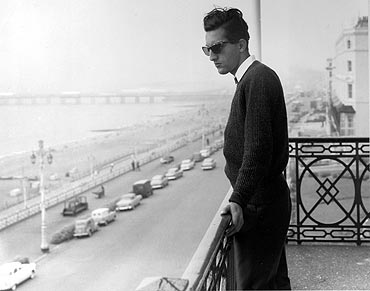
Only a fool or cricketing ignoramus, says Haresh Pandya, would judge Tiger on the basis of his figures of 2,793 runs at 34.91 in 83 innings of 46 Tests.
The truism 'like father, like son' perfectly fitted Mansur Ali Khan, the Nawab of Pataudi, who was known as Tiger in cricket circles.
In many ways he followed in the footsteps of his father, Iftikhar Ali Khan, a world-class batsman who represented England in the 1932-33 Bodyline series Down Under and led India in three Tests on the 1946 tour of the Old Country. If anything, Tiger was arguably a far better batsman, smarter fielder and more imaginative and inspirational captain.
- Share your favourite 'Tiger' Pataudi memory
Mohammad Mansur Ali Khan was born in Bhopal on January 5, 1941. He held the title Nawab of Pataudi by right, having succeeded his father, who ruled over some 25,000 inhabitants of a small state in the Punjab, situated 30 miles south-west of Delhi. He grew up in Pataudi in a 150-room palace, where over a hundred servants were employed, half-a-dozen of whom were his personal attendants since childhood. He had his personal tutor before going to a Welham Preparatory School, Dehra Dun, as a boy well-versed in Urdu and English.
Iftikhar Ali had planned his son's education and completed the Winchester College application form with a typical flourish. To the question 'Other aptitudes?' he gave the simple answer: 'My son!'
Tiger was barely 12 when he lost his father. He was soon sent to England, where he first attended a preparatory school at Hemel Hempstead and later went to Winchester College, where he progressed to beat almost all the records of its most illustrious student, Douglas Jardine, the former England captain; and also showed distinct flair for leadership.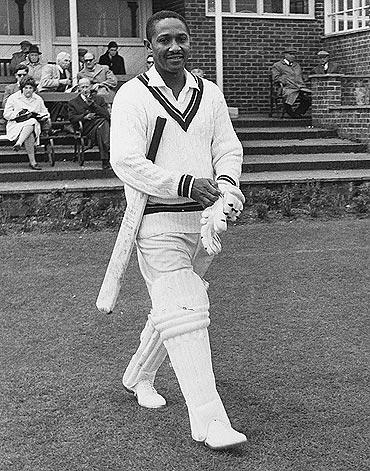
Onboard the ship going to England were many famous cricketers, including Vinoo Mankad, Sony Ramadhin, Everton Weekes, Clyde Walcott and Frank Worrell. Tiger played deck games with these legends and received vital tips from them. Their constant, inspiring company further stocked his cricketing ambitions. Hardly could Worrell have imagined that in ten years, almost to the month, his teenaged shipmate would be walking out with him to toss while leading the Indian team in the West Indies in 1962.
Just like his father, Tiger also had his 'first significant coaching' from the great English cricketer Frank Woolley. Spectacular in attack and solid in defence, Tiger was a sight to behold when on song. He had a large repertoire of shots and he played most of them so confidently and perfectly that it was difficult to say which one was his best. Many felt the pull was Tiger's signature shot. But it was debatable. His cover-drive, on-drive and square-cut were just about as attractive.
At 16, he made his first-class debut for Sussex against his father's old county, Worcestershire. In 1960, he went to Balliol College, Oxford, where Iftikhar Ali had also studied. Again like his father before him, he won his 'Blue' as a freshman and scored a century against Cambridge at Lord's. But unlike his father, who never captained his university and county teams, Tiger led both Oxford and Sussex.
'He was naturally keen and quick in everything he did, and this was the hallmark of his batting, accompanied by fleet-footed running between the wickets. He and Asif Iqbal would have been some partnership in a limited-overs match because if any combination could have turned one run into two it would have been this one. Then there was his stroke-making off both front foot and back foot, with the bat equally at home in the horizontal as in the vertical plane,' observed Ted Dexter.
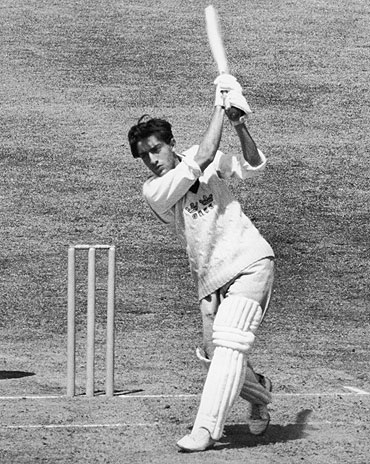
Just when he was blossoming into a top cricketer, Tiger met with that dreadful car accident on July 1, 1961, in which his right eye was totally destroyed. 'It took me a long time to realise that I had virtually lost the use of one eye, but even then, never for an instant did I consider I might not be able to play cricket again,' he said.
Tiger was back on the field in the Indian season immediately following, albeit after having to make a lot of adjustment in sighting the ball with only one proper eye and changing his style and technique accordingly. It was not easy because where others saw one ball, he saw two, almost seven inches apart. To get his bat to the ball, Tiger had to pick the right one -- the inner image.
Yet, six months after losing his eye, he made his Test debut against England at Delhi, making 13 in 70 minutes in India's only innings in the drawn game. Came the next Test in Calcutta, the fourth of the series, and Tiger showed his true stripes, scoring 64 (with 11 fours) with the 'freedom' of a 'very mature' player. 'This innings enabled India to set up a match winning rate of scoring. At a time when the leading Indian batsmen were so given to stodginess, his batting was like a gush of fresh air let into a stuffy, musty room,' noted Wisden. His contribution of 32 in the second innings was not less important. In the fifth and final Test at Chennai, he again played a match-winning innings, a 'riotous' 103 studded with 14 fours and 3 sixes. 'Tiger, tiger, burning bright...'
Tiger arrived on the scene when India badly needed a batsman who was strong, as well as bold, against any attack, home and away, and an astute captain who could lead by example. India's next assignment, the difficult tour of the Caribbean in 1962, proved to be a turning point in Tiger's budding career. The veteran of only three Tests was made vice-captain. But he was pitchforked into the most difficult job in Indian cricket after Nari Contractor was struck on the skull by a lifter from the brutally quick and hostile Charlie Griffith in a tour match against Barbados. At 21, Tiger became the youngest ever Test captain in history. He led in the last three Tests of the series and went on to captain in thirty-seven more. It was the beginning of the Pataudi Era in Indian cricket.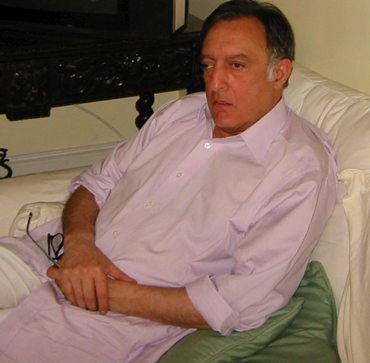
Not only did Tiger instill a new dose of confidence in the players but also brought about a sea change in the Indian fielding. Tiger himself was like a panther, particularly in the cover region, and his very presence on the field was enough to lift the morale of the whole team.
And to think he was robbed of the vision of his right eye. Tiger inspired a new generation of Indian fielders in the whole of 1960s and early 1970s. Apart from Tiger, you had Rusi Surati, Abid Ali, Srinivas Venkataraghavan, Ajit Wadekar and later the best of them all, Eknath Solkar. And they were also a major reason why our famed spinners were so successful. Almost throughout the 1960s, Tiger excelled in his three roles -- batsman, fielder and captain. Leading India against England in 1963-64, he scored 203 not out in the fourth Test at Delhi. A year later, he made 270 runs at 67.50, including a jewel of an innings of 128 not out in a total of 276 in the first Test at Chennai. He scored 86 and 53 in India's win at Mumbai. He carried his good form against the New Zealanders who visited India a few weeks later. Tiger proved too good for the Kiwis, scoring 317 runs at 52.83, including 153 in the second Test at Calcutta and 113 in the fourth at Delhi.
Despite Tiger's splendid batting and shrewd captaincy, the Indian team suffered a string of misfortunes on his only tour of England in 1967.
In all, he scored 777 runs at 35.31 on the tour, including 269 at 44.83 in the Tests. In the very first Test at Headingley, Leeds, he scored 74 and 148 in what was a heroic fight-back. Then, in Australia, in spite of considerable personal and team problems, he headed the Test averages with 339 runs at 56.50. At Melbourne, he made 75 and 85 with only one eye and one leg as he was suffering from a hamstring injury. Don Bradman, who visited the Indian dressing room, congratulated Tiger and said, 'I'd have been proud to have played some of the shots you did.'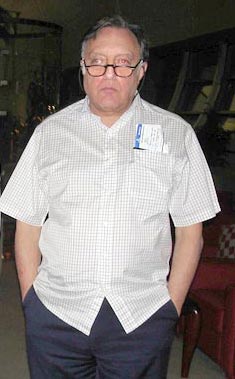
He made the most of his brilliant mental gifts when captaining the side. He knew how to get the best out of his players and he was not afraid to accept challenges and even to dare his opponents sometimes.
India achieved some of the best laurels under Tiger's captaincy, including our first Test and series win abroad -- against New Zealand in 1967-68.
After Wadekar put in his papers in the wake of India's disastrous tour of England in 1974, the only captain capable of anchoring the sinking ship was Tiger. And he more than justified the selectors' confidence in his leadership ability against the mighty West Indies at home in 1974-75. Though he failed miserably with the bat, Tiger's captaincy played a key role in those thrilling back-to-back triumphs at Calcutta and Chennai after heavy defeats in Bangalore and Delhi. Anything could have happened in the crucial fifth Test in Mumbai, but the Indians, especially bowlers, performed like chumps when it came to the crunch and let the Caribbeans off the hook. Only a fool or cricketing ignoramus would judge Tiger on the basis of his figures of 2,793 runs at 34.91 in 83 innings of 46 Tests.
Let Tiger have the last word on his true character as well as approach to the game: 'In the country of the blind, the one-eyed man is king. But in the keen-eyed world of cricket, a fellow with just one good eye-and-a-bit has to settle for something less than the perfection he once sought. Lucky me, despite this, to have been able to play the game all over the world in the company of giants.'